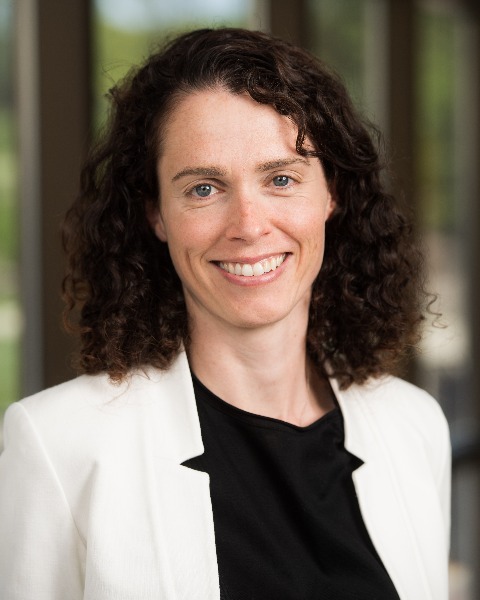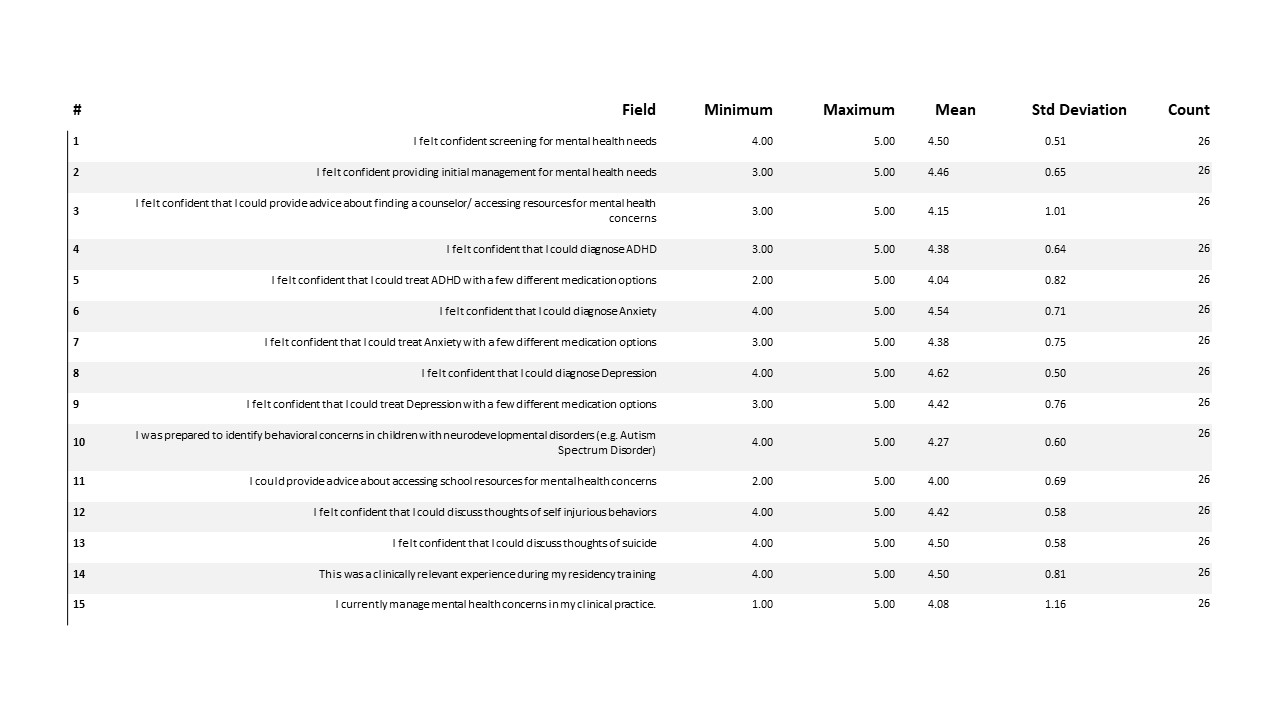Mental Health
Session: Mental Health 2
567 - Mental Health Competencies for Pediatric Training, an Integrated Care Model: Solution to a Curricular and Practice Challenge
Sunday, May 5, 2024
3:30 PM - 6:00 PM ET
Poster Number: 567
Publication Number: 567.1956
Publication Number: 567.1956

Joanna Quigley, MD (she/her/hers)
Clinical Associate Professor of Psychiatry and Pediatrics
University of Michigan Medical School
Ann Arbor, Michigan, United States
Presenting Author(s)
Background: The Surgeon General recently declared a mental health emergency for youth in the United States (1). The American Academy of Pediatrics continues to acknowledge the importance of pediatricians in providing mental health care (2,3). In 2022, the ACGME updated training objectives for pediatric residents in mental health care. In 2010, a pediatrician and child psychiatrist collaborated on a GME proposal for a collaborative care clinic, led by faculty in Child Psychiatry for Pediatric house staff to meet this training need, and improve access to care.
Objective: To describe and assess the development and implementation of a collaborative training clinic model. We will also discuss outcome measures obtained and related to trainee knowledge and confidence as well as referring provider satisfaction.
Design/Methods: This clinic is staffed by 0.1 FTE of a Child and Adolescent Psychiatry Faculty. Each resident cares for three patients during one afternoon of clinic, a combination of new and follow up cases. We continue to track volume of patients seen, residents engaged, track alumni responses to items around comfort managing mental and behavioral concerns in an anonymous post-training survey.
Results: During the initial pilot, the clinic cared for 66 unique patients, average age of 12.7 years, 45% presented with a diagnosis of ADHD, 29% with a diagnosis of anxiety, and 32% with a diagnosis of depression. This cohort of patients was seen for an average of three follow up visits, and 30% of patients were covered by Medicaid insurance. Time to referral to the clinic averaged 1-3 weeks, with follow-up scheduled in 2-4 weeks. Residents received pre and post rotation surveys that assessed their content knowledge in pediatric mental health, as well as their perceived comfort in assessing and managing a core group of pediatric mental health concerns [Table 1].
In a recent alumni survey, graduates reported feeling confident in diagnosing anxiety (4.38 out of 5), depression (4.62) and ADHD (4.38). They also indicated that they felt able to treat these diagnoses at a high level.
Conclusion(s): Innovative clinical models bolster training in pediatric mental health care. This clinic model launched to create opportunities for direct, bedside management of mental health concerns by pediatric trainees, champion a collaborative care model, and improve partnerships between pediatric primary care, and child psychiatry. Initial surveying during the pilot phase of the clinic were promising, the clinic is sustainable, and residents continue to find value in learning from this collaborative care model.

